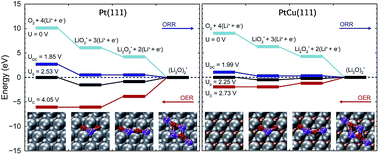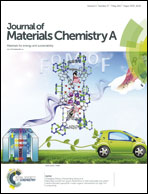In pursuit of catalytic cathodes for lithium–oxygen batteries
Abstract
Li–O2 batteries are among the most promising electrochemical energy storage systems, which have attracted significant attention over the past five years due to their potential to satisfy new demands such as powering electric vehicles. However, Li–O2 batteries are lagging behind their rivals, because of the complicated nature of the cathode processes. Despite numerous efforts, our knowledge is very limited to design the practical cathodes. This review aims to survey the studies reported in the literature to provide a comprehensive perspective on the topic. The base material for the cathodes is typically high surface area carbon, but its architecture should be engineered to maximize the reaction efficiency. Although there are controversies about the role of catalysts in the cathode process, utilizing an appropriate catalyst seems to be mandatory. Precious metals can significantly reduce the overall overpotential but make no contribution to the specific capacity and cyclability, which is still one of the key issues of Li–O2 batteries. Other transition metals and their oxides have shown promising results, yet far from being practical, as they reduce the specific capacity of the base carbon cathode. In any case, the structural design of the materials (both carbon and catalysts) at the atomic scale is of utmost importance to increase the number of active sites on which the charge transfer is fast enough to conduct the cathodic reactions. Another interesting point, which has not been recognized yet, is that most of the promising materials display active pseudocapacitive behavior in their original electrochemical studies. Although pseudocapacitance is not directly connected with the catalytic reaction at the cathode, their similarities suggest that ideal catalysts should have a series of different redox sites facilitating the electrocatalytic reaction at various levels of energy. In other words, physical and chemical irregularities are an essential requirement for the cathode materials in Li–O2 batteries.

- This article is part of the themed collection: Recent Review Articles


 Please wait while we load your content...
Please wait while we load your content...